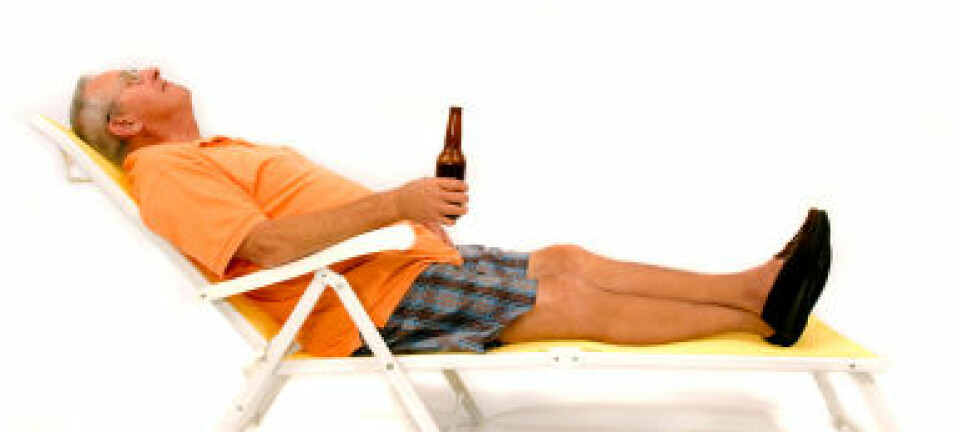
Rise in strokes among younger women
More women under the age of 50 are suffering strokes despite a fall in the incidences of strokes in the general population. Scientists do not fully understand why.
The risk of strokes is largely linked to gender. More men than women suffer cerebral haemorrhages (bleeding in the brain) and blood clots in the brain. Women are on average four or five years older than men when suffering strokes, which are when a blood clot breaks off and blocks circulation to the brain.
These are just some of the gender differences connected to strokes. At a national conference about strokes this week in Oslo, Professor Ellisiv Mathiesen revealed more about how strokes strike women.
The trend is a decrease
Fewer people are now dying of strokes and fewer are getting them in the first place. Most persons who suffer strokes are over the age of 70.
But women who are middle-aged or younger are less fortunate in this respect.
“The incidence is rising among younger women under the age of 50,” says Mathiesen. She works at the University of Tromsø and is an expert on strokes and blood circulation to the brain.
What’s causing this?
“We don’t know,” she says.
The reduction of risk factors, including lower blood pressure, lower cholesterol levels and a decline in cigarette smoking have contributed to the general decrease in incidences of strokes in Norway.
“As we cannot see the same decrease amongst the younger women, it’s possible that other causes dominate in this group,” suggests Mathiesen.
Lower blood pressure
Reductions in blood pressure largely explain why fewer are suffering suffer cerebral haemorrhages and blood clots in the brain in Norway. The same is being seen in other Western countries.
Hypertension (high blood pressure) is one of the major risk factors for such damage to the brain.
As regards cerebral haemorrhages, no distinct decline in numbers is seen among men but there is a positive trend overall amongst women. Mathiesen thinks this might be attributed to a larger decrease in blood pressure among women than men.
“Cerebral haemorrhages have dropped the most, probably because of a rise in the use of medications that reduce blood pressure,” she says.
Several studies also show differences between the sexes regarding the treating of patients at risk.
Cardiac fibrillation worst for women
“Atrial fibrillations, or heart flicker as many say, are a strong risk factor for heart attacks. Women run a higher risk than men of suffering strokes once they have atrial fibrillations. They also have a tendency to suffer more serious strokes,” says Mathiesen.
This might be because women tend to be older than men when strokes occur. On average they also have more supplemental health problems. A blood clot in the brain due to atrial fibrillations could possibly have more serious consequences among women because on average the diameters of their arteries are smaller than men’s.
Women also run a greater risk of cerebral haemorrhaging than men. Doctors are uncertain why.
In the north of Norway the incidences of such haemorrhaging are greater than in other regions of the country.
Worse odds
Persons in risk zone with high blood pressure should take anti-hypertensive medications.
They should also be given drugs that lower their blood cholesterol levels. Atrial fibrillation patients should take anti-coagulant drugs against blood clots.
“Several studies show that women diagnosed with atrial fibrillations are a little less frequently treated with anti-coagulant medications than men,” says Mathiesen. The gender disparity in this case, however, is not so significant.
Less surgery
However, clear gender differences are seen regarding surgical treatment of heart flickers.
This involves a “searing” of muscle tissue in the heart with heat or cold to block harmful electrical impulses that cause the heart flickers.
“Fewer women than men are offered this treatment,” says Mathiesen.
Another surgical procedure involves removing blood clots by “fishing” them out of the affected brain artery.
“Research here shows that women have poorer odds of attaing a good treatment result. Other studies, however, have not shown a definite difference between women and men here,” says Mathiesen.
The disparity in treatment results might be attributed to sexual dimorphism.
“It could be harder to succeed because everything is smaller and more crowed in women than in men, including in the brain,” she explains.
Risk factors that increase
All the efforts by the population toward adopting healthier living styles deserve credit for the general decrease in strokes.
Blood pressures are dropping, as are cholesterol counts. Smoking is far less common. But other risk factors are on their way up.
“More people are getting diabetes type 2 and we see more obesity. These are developments that raise the risk of strokes,” says Mathiesen.
-------------------------------------
Read the Norwegian version of this article at forskning.no
Translated by: Glenn Ostling
































